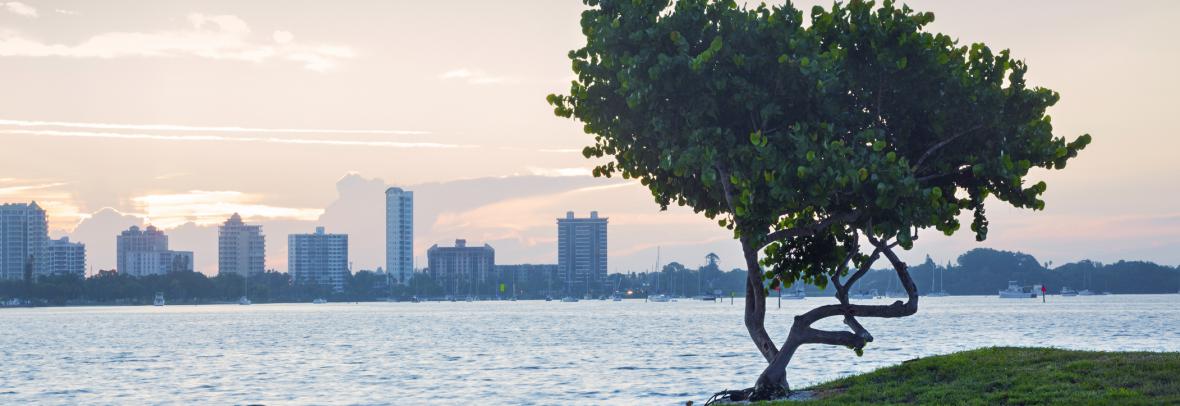
Home prices rose 8.6% in 3Q, with 46% of metros seeing double-digit price growth – a drop from 80% in 2Q. Of the top 10 high-price-increase metros, 7 are in Fla.
WASHINGTON – An overwhelming majority of metro markets saw home price gains in the third quarter of 2022, according to the National Association of Realtors® (NAR). That increase was in spite of rising mortgage rates that approached 7% and declining sales.
Of the 185 metros NAR tracks, 46% had double-digit price increases, though that’s down from 80% in the second quarter.
The national median single-family existing-home price climbed 8.6% year-to-year to $398,500. While still a notable price increase, it’s down from the 14.2% recorded in the previous quarter.
“Much lower buying capacity has slowed home price growth and the trend will continue until mortgage rates stop rising,” says NAR Chief Economist Lawrence Yun. “The median income needed to buy a typical home has risen to $88,300 – that’s almost $40,000 more than it was prior to the start of the pandemic back in 2019.”
Among the major U.S. regions, the South registered the largest share of single-family existing-home sales (44%) and the greatest year-over-year price appreciation (11.9%) in the third quarter. Prices were up 8.2% in the Northeast, 7.4% in the West, and 6.6% in the Midwest.
Fla. has 7 of top 10 metros for price growth
- North Port-Sarasota-Bradenton – 23.8%
- Lakeland-Winter Haven – 21.2%
- Myrtle Beach-Conway-North Myrtle Beach, S.C.-N.C. – 21.1%
- Panama City – 20.5%
- Deltona-Daytona Beach-Ormond Beach – 19.6%
- Port St. Lucie – 19.4%
- Greenville-Anderson-Mauldin, S.C. – 18.9%
- Kingsport-Bristol-Bristol, Tenn.-Va. – 18.8%
- Tampa-St. Petersburg-Clearwater – 18.8%
- Ocala (18.8%
10 most expensive markets in the U.S.
- San Jose-Sunnyvale-Santa Clara, Calif. – $1,688,000; 2.3%
- San Francisco-Oakland-Hayward, Calif. – $1,300,000; -3.7%
- Anaheim-Santa Ana-Irvine, Calif. – $1,200,000; 9.1%
- Urban Honolulu, Hawaii – $1,127,400; 7.6%
- San Diego-Carlsbad, Calif. – $900,000; 5.9%
- Los Angeles-Long Beach-Glendale, Calif. – $893,200; 3.8%
- Boulder, Colo. – $826,900; 7.5%
- Naples-Immokalee-Marco Island – $746,600; 16.7%
- Seattle-Tacoma-Bellevue, Wash. – $741,300; 4.6%
- Boston-Cambridge-Newton, Mass.-N.H. – $698,900; 6.2%
“The more expensive markets on the West Coast will likely experience some price declines following this rapid price appreciation, which is the result of many years of limited home building,” Yun says. “The Midwest, with relatively affordable home prices, will likely continue to see price gains as incomes and rents both rise.”
Higher cost for monthly payments
In the third quarter of 2022, stubbornly high home prices and increasing mortgage rates reduced housing affordability. The monthly mortgage payment on a typical existing single-family home with a 20% down payment was $1,840. That’s a marginal increase from the second quarter ($1,837) but a significant year-to-year jump of $614 – or 50%.
Families typically spent 25% of their income on mortgage payments, down from 25.3% in the prior quarter, but up from 17.2% one year ago.
“A return to a normal spread between the government borrowing rate and the home purchase borrowing rate will bring the 30-year mortgage rates down to around 6%,” Yun says. “The usual spread between the 10-year Treasury yield and the 30-year mortgage rate is between 150 to 200 basis points, rather than the current spread of 300 basis points.”
First-time buyer challenges
First-time buyers looking to purchase a typical home during the third quarter of 2022 continued to feel the impact of housing’s growing unaffordability. For a typical starter home valued at $338,700 with a 10% down payment loan, the monthly mortgage payment rose to $1,808 – nearly identical to the previous quarter ($1,807) but an increase of almost $600 (49%), from one year ago ($1,210).
First-time buyers typically spent 37.8% of their family income on mortgage payments, up from 36.8% in the previous quarter. A mortgage is considered unaffordable if the monthly payment (principal and interest) amounts to more than 25% of the family’s income.
A family needed a qualifying income of at least $100,000 to afford a 10% down payment mortgage in 59 markets, up from 53 in the prior quarter. Yet, a family needed a qualifying income of less than $50,000 to afford a home in 17 markets, down from 23 in the previous quarter.
© 2022 Florida Realtors®
Go to Source
Author: kerrys



